See the rebirth of Kangaroo Island up close on a new walk
The resilience of South Australia’s KI is on abundant display on this gentle, four-day walk.

Of all the things I shouldn’t be shocked to run into on Kangaroo Island, a roo would have to be right up there. But there’s something symbolic about the western grey we encounter on the windswept cliffs above the Southern Ocean, sipping impassively from a puddle of rainwater that’s collected on the porcelain-white limestone. Misty showers and sea fog have been drifting in all morning, smothering the headlands and limiting visibility, so the animal appears before us almost as an apparition, materialising from the murk. He finishes his drink, turns his head towards us for a moment, then slowly bounds away, evaporating into the mist.
If this coastline feels forgotten and eerie, that’s because it is. Aboriginal people abandoned Australia’s third-largest island when it separated from the mainland 10,000 years ago, but they gave it a name: Karta Pintingga, or Island of the Dead. In 1899, a ship called the Loch Sloy was wrecked on the rocks offshore from where my hiking group is standing, with just four of the 34 men on board making it to shore alive. One of the survivors spent two weeks wandering through the wilderness, surviving on pig face, penguin and brackish water, until he stumbled upon a homestead, his tongue black and swollen. We’re retracing his route.
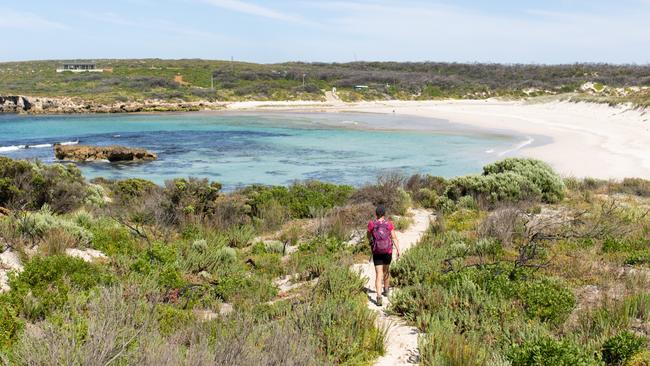
I’ve joined eight other hikers on the Australian Walking Company’s Kangaroo Island Signature Walk, a four-day guided hike along two thirds of the 66km Kangaroo Island Wilderness Trail, open for business again after being destroyed in the black summer bushfires of 2019-20, which burned almost half the island, and virtually all 33,000ha of Flinders Chase National Park.
I was one of the first to hike the trail when it opened in 2016, carrying an 18kg pack and pitching my tent at plush, purpose-built campsites. I have wonderful memories of the rugged coastal beauty, of cooking meals in solar-powered kitchens while scarlet robins danced about in the trees, and drifting off to sleep to the sound of the pounding surf. I nearly cried when I heard it was gone, then nearly cried again when I learned how hard people had worked to rebuild it.
The trail’s reopening in December last year – along with the rebuild of Southern Ocean Lodge, which the trail skirts – marked both a physical and psychological milestone in the island’s recovery. I’m excited to see how the bush has regenerated, but I’m also feeling a bit smug, because this time I’ll be walking in a lot more comfort, carrying only a daypack and sleeping in a real bed. Oh, and someone else will be doing the cooking. It feels like cheating, but I figure I’ve paid my dues.
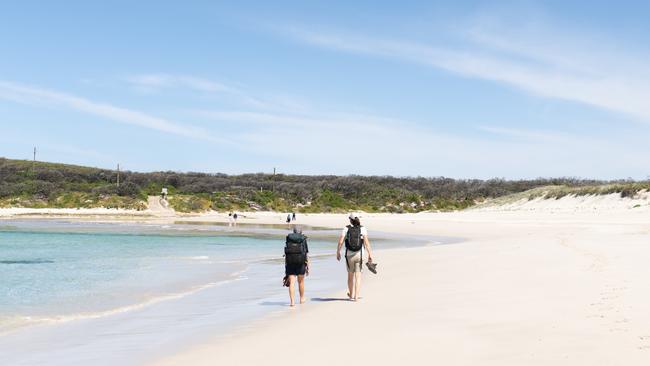
We ease into the walking on the 8km Black Swamp Circuit, a welcome chance to stretch our legs after a long drive (followed by a ferry crossing, then another long drive) from Adelaide.
The sun beats down as we enter a busy metropolis of melaleuca, hakea and mallee trees, their seed pods cracked open by the flames and germinating in the nutrient-rich ash. Xanthorrhoea, or yaccas, are the great fire survivors; their tightly packed leaf bases are sealed with resin to insulate the stem from heat. Post-fire, their flower spikes have gone crazy, shooting skywards at more than 2cm a day. Closer to the ground they wear a skirt of dead leaves, providing habitat for digging marsupials such as dunnarts.
Our footsteps send sunbaking goannas scurrying (we jump each time, thinking it’s a snake), prompting our guide, Yasmin, to direct our attention to a hole in a termite mound. Yasmin explains how female Rosenberg’s goannas dig the holes and lay their eggs in the mound. The termites then helpfully patch up the hole, creating the perfect temperature for the eggs to incubate. When the babies hatch from their eggs eight months later, they’ll grow strong by eating their hosts, before digging themselves out of the termite mound, presumably winning the “worst houseguest in the animal kingdom” competition.
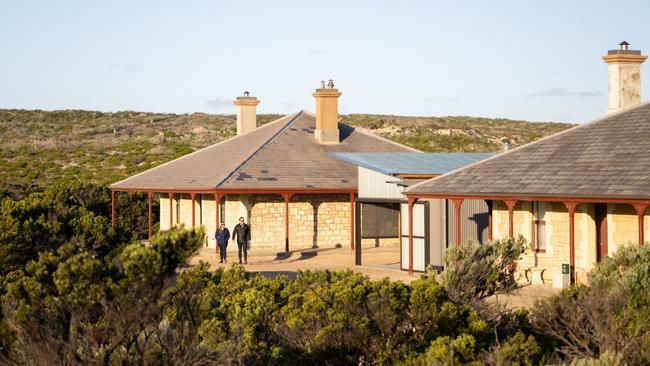
Our three guides are full of stories that enrich our understanding and bring the landscape to life. While Yasmin and Abby wrangle us on the trail, Dane handles gastronomy duties back at our accommodation, Cape du Couedic Lighthouse Keepers’ Cottages (AWC’s plan to build eco-lodges within the national park has been, at least temporarily, shelved).
The lighthouse was constructed from 2000 pieces of local limestone between 1906 and 1909 in response to a slew of shipwrecks, including the Loch Sloy. It was a tough life for the early lighthouse keepers and their families. The first keeper drowned not long into the job, and another fell 21m while cleaning the lantern; he miraculously survived.
The two guest cottages are constructed from the same limestone and have been smartly restored, each with three twin-share rooms, a spacious bathroom with rain shower, plus a second shower and toilet, and a kitchen that retains plenty of heritage character. Internet reception is on a par with what the original families had a century ago, so bring a book to read on the porch, and enjoy the company of inquisitive wallabies poking around in the shrubs.
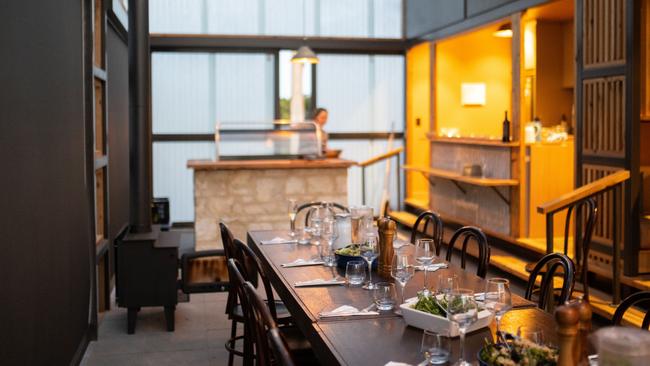
Our group consists of a couple, two singles, plus four childhood friends from Sydney who booked the trip to celebrate their recent 50th birthdays. We convene for meals and fireside chats inside a semi al fresco pavilion, which has a small lounge with a library, games, yoga mats and a foam roller for ironing out sore muscles. There’s even a guitar, should the Kumbaya mood strike outside by the firepit.
At the end of the day we soothe our soles in hot footbaths while enjoying wine from Islander Estate Vineyards, or craft beer from Kangaroo Island Brewery. Dane dishes up dinners of golden crumbed King George whiting, barbecued local lamb chops, and a succulent beef ragout. Hot breakfasts, healthy lunches and lavish, pre-dinner nibbles keep us trail fit, and spontaneous picnics with surprises such as Coffin Bay oysters and gin and tonic, courtesy of Kangaroo Island Spirits, are sprung upon us in the most sublime settings. Starvation seems unlikely.

There’s barely a hill along the length of the trail, yet we have no shortage of views. A pair of white-bellied sea eagles soaring above heralds our arrival at the coast on day two, not long after crossing the sandstone-studded Rocky River. We pass caves filled with fossilised tree roots posing as stalactites, skirt cliffs coloured with the pink flowers of pygmy pig face, silver daisy bush, and yellow-tipped bells of correa, and stop to nibble on crisp clumps of samphire, the succulent also known as sea asparagus, for which you pay good money in restaurants vaunting Indigenous-inspired recipes and menus.
It’s on the cliffs above Maupertuis Beach where we meet the island’s eponymous marsupial, before following the path on to the beach. Tiny hooded plovers scurry along the sand, and foamy waves make wild lunges at our ankles. The ocean here is too sharky for seals, but we spot dozens the next day, draped like leeches over rocks below the trail in a sheltered cove.
“Check out the daycare centre,” Yasmin says, passing me her binoculars and pointing to a natural pool protected by boulders. Sleek young seals are playing while the adults doze on the beach. Pods of dolphins are spotted from the historic Weirs Lookout, where we take a rest amid the concrete ruins of a storeroom that once housed supplies for the lighthouse. It took more than two decades to build an overland road from the main town of Kingscote to Cape du Couedic, during which time everything arrived by sea and was winched 90m up the cliff by a horse-powered pulley system.
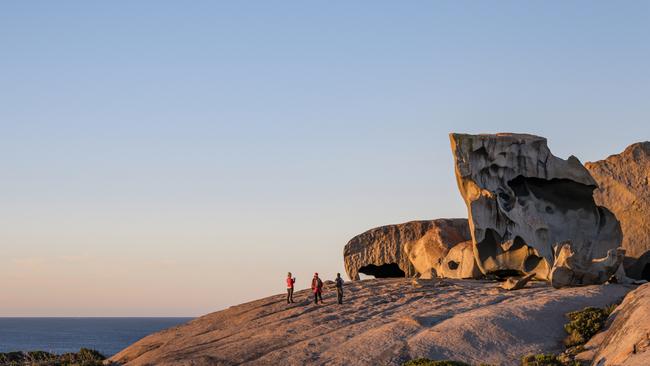
Our isolated abode affords several advantages, not least that we arrive at Remarkable Rocks – the most singularly arresting feature on the island – well before the crowds, and with the sun low enough to bathe the granite in alluring textural shadows. Coated in orange lichen and neatly arranged on a plinthlike platform above the ocean, the rocks look like they’ve been recently curated for a modern art sculpture exhibition. They’ve actually been eroding for 500 million years, which suits Yasmin’s description of them looking like smashed dinosaur eggs.
From the ancient rocks, the trail meanders inland through clusters of hill daisy and buckbush, two of the first plant species to colonise an area after fire, introducing nutrients to the soil and laying the groundwork for the eucalypt trees already outstripping them. There’s an incredible contrast between the charred, skeletal branches of tea trees and the vivid green leaves of wattle sprouting from the sand dunes behind Sanderson Bay, interspersed with splashes of rust-coloured paper daisies. The island’s resilience is on full show at every turn.
We have lunch on the sand, and as waves pummel the coral-shaped limestone I’m transported back to the last time I sat here, seven years ago, before the apocalypse. I remember walking down to the beach from my campsite after dinner, and watching sunset paint the rockpools purple, and the silver strands of moonlight quiver on the infinite ocean. I recall thinking how far removed from ordinary worldly horrors this rare patch of wilderness was; how untouchable and innocent it all seemed. And how I knew I’d be back.
In the know
Australian Walking Company’s Kangaroo Island Signature Walk is a four-day, all-inclusive guided hike, starting and finishing in Adelaide. It operates March-June and September-November; $2895 a person, twin-share (single supplement available).
Ricky French was a guest of Australian Walking Company and South Australia Tourism Commission.
If you love to travel, sign up to our free weekly Travel + Luxury newsletter here.


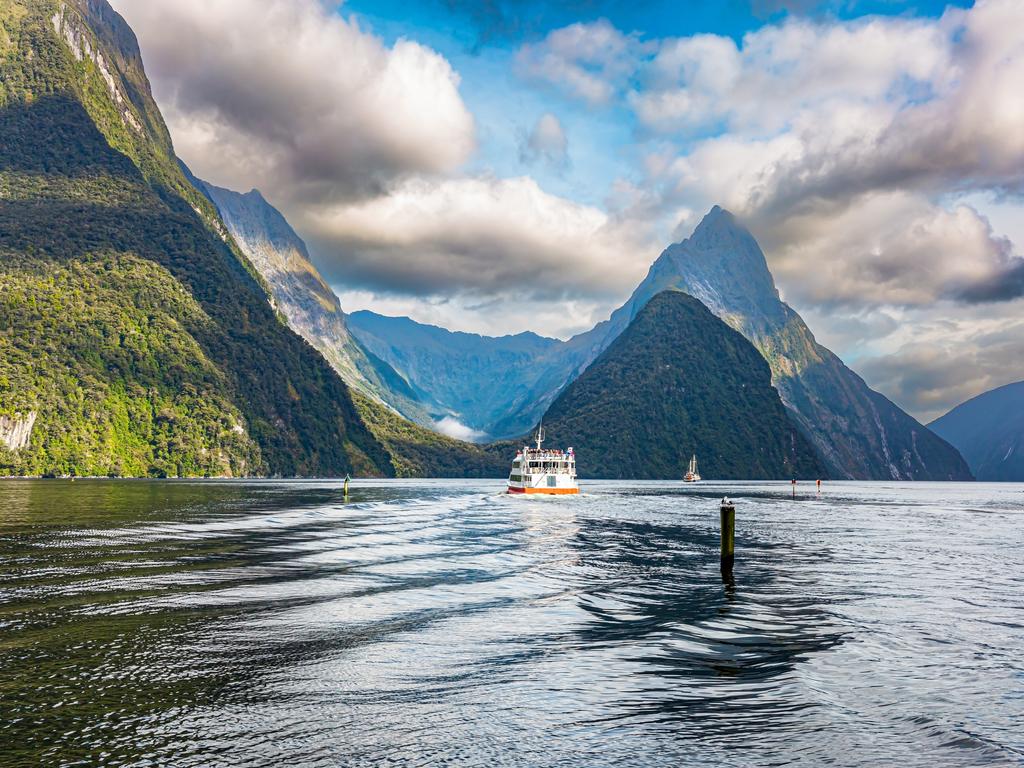
To join the conversation, please log in. Don't have an account? Register
Join the conversation, you are commenting as Logout